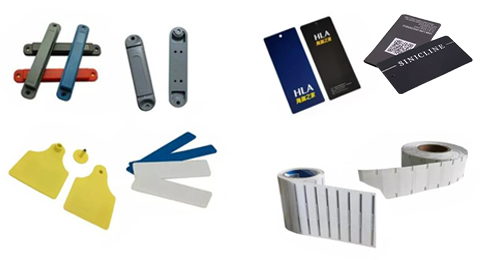400-9920-618
The RFID system consists of three parts: RFID electronic tags, RFID readers, and RFID antennas. As an important part of the system, the reading and writing distance of RFID readers is related to the performance of the readers, antennas, and tags, and is also affected by feeder line and environmental factors.

1. RFID Reader: The transmit power of the RFID reader affects the read and write distance. The greater the transmit power of the reader, the greater the read and write distance.
2. Antenna: The antenna gain and beam width of the RFID reader affect the reading and writing distance and range. The larger the antenna gain and the smaller the beam width, the farther the reading and writing distance will be.
3. RFID Tags: RDID tags are divided into active RFID tags and passive RFID tags according to the power supply status.
Active RFID tags: they are powered by batteries, have a long reading and writing distance, and are larger in size, which is more expensive than passive RFID tags.
Passive RFID tags: Passive RFID tags have no battery, low cost, long service life, and relatively short read and write distances.
The size of the RFID tag also affects the read and write distance. In theory, the larger the size of the RFID tag, the farther it can read.
4. Feeder line: It is related to the unit attenuation of the feeder line. The larger the attenuation, the closer the reading and writing distance. On the contrary, the smaller the attenuation is, the longer the reading distance is. It is also related to the total length of the feeder line connecting the reader and the antenna. The shorter the writing distance is, the shorter the feeder line is, and the longer the reading distance is.
5. Environment: The environment mainly refers to whether there are obstacles (metal, liquid, etc.) between the RFID reader antenna and the tag, and whether there is electromagnetic interference with similar frequencies in the environment. The signal of the RFID tag can penetrate non-metallic or non-transparent materials such as paper, wood and plastic, and can carry out penetrating identification. However, metals and liquids will affect electromagnetic waves, affecting the reading and writing distance. If it penetrates metal or liquid, it will affect the reading distance, or even unable to read. In this case, metal-resistant and liquid-resistant labels are required.
Generally speaking, we usually talk about how many meters the device can read. In fact, this is only the data measured under a specific condition and environment. It can only be used as a reference. In addition, UHF RFID is not only suitable for long-distance applications. In fact, it can be used from zero distance to long distance, and the closer the distance is, the easier it is to achieve, but the cost is relatively high.
Shenzhen Handheld-Wireless has been committed to the research and development of industrial handheld terminal equipment since its establishment. Over the years, it has provided customers with diversified and customized application solutions, providing PDA industrial barcode scanners, RFID handheld devices, industrial tablets, etc., which have been widely used. Used in logistics, finance, public security, border inspection, government, aerospace, electric power, factories, education, medical and other fields.